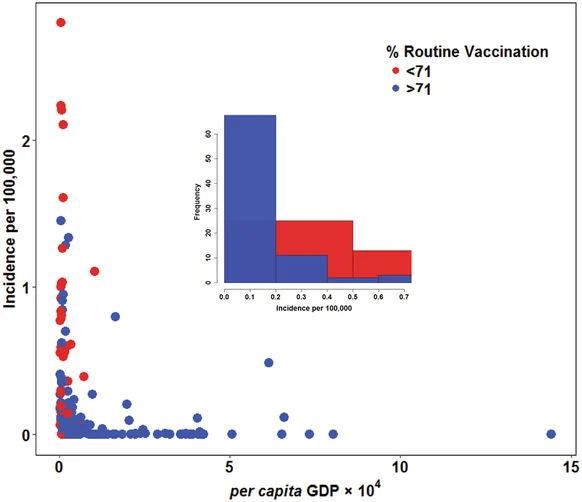Navideh Noori, John M. Drake, Pejman Rohani
Scientific Reports
December 12, 2017
ABSTRACT
Understanding the determinants of polio transmission and its large-scale epidemiology remains a public health priority. Despite a 99% reduction in annual wild poliovirus (WPV) cases since 1988, tackling the last 1% has proven difficult. We identified key covariates of geographical variation in polio transmission patterns by relating country-specific annual disease incidence to demographic, socio-economic and environmental factors. We assessed the relative contributions of these variables to the performance of computer-generated models for predicting polio transmission. We also examined the effect of spatial coupling on the polio extinction frequency in islands relative to larger land masses. Access to sanitation, population density, forest cover and routine vaccination coverage were the strongest predictors of polio incidence, however their relative effect sizes were inconsistent geographically. The effect of climate variables on polio incidence was negligible, indicating that a climate effect is not identifiable at the annual scale, suggesting a role for climate in shaping the transmission seasonality rather than intensity. We found polio fadeout frequency to depend on both population size and demography, which should therefore be considered in policies aimed at extinction. Our comparative epidemiological approach highlights the heterogeneity among polio transmission determinants. Recognition of this variation is important for the maintenance of population immunity in a post-polio era.

